|
|
|
SASAP FIELD TRIP TO THE EASTERN CAPE, APRIL-MAY 2000
Tarkastad is in the heart of Eastern Cape, between the Bamboesberg to the north and the Winterberg to the south, on a windswept plain on the road between Cradock and Queenstown. Tarkastad does not warrant being called a ‘village’ let alone a ‘town’, so the remote dot on the map is subsequently little known to the average traveller. Yet this charming hamlet rests peacefully in a rugged and lovely landscape, and the character of its inhabitants echoes these attributes.
It was here that SASAP members were invited by Johann Neveling from the Council for Geoscience, Pretoria, to join him and his assistant ‘Baba’ Tshabalala, and to help in any way possible with Johann’s research work.
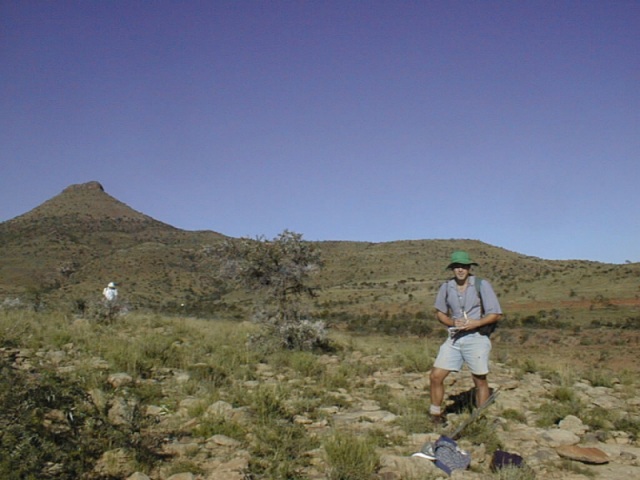
The project in hand was Johann’s doctoral thesis, the theme of which was to explore the one period in the southern African where the geological timetable didn’t appear to match the palaeontological record. At present there is a ‘missing link’ in the fossil record during the Triassic Period, but armed with his knowledge of geology, sedimentology and palaeontology, Johann has set out to join the links of the chain and complete the record.
Each day, Johann worked high on the steep mountain slopes. There he would ponder and measure the uppermost of the exposed layers of sediment rock, speculating as to how they were laid down and what climatic influences determined their final resting place in the Eastern Cape. Below these strata, SASAP members were detailed to search for fossil evidence that would support Johann’s findings in the strata above.
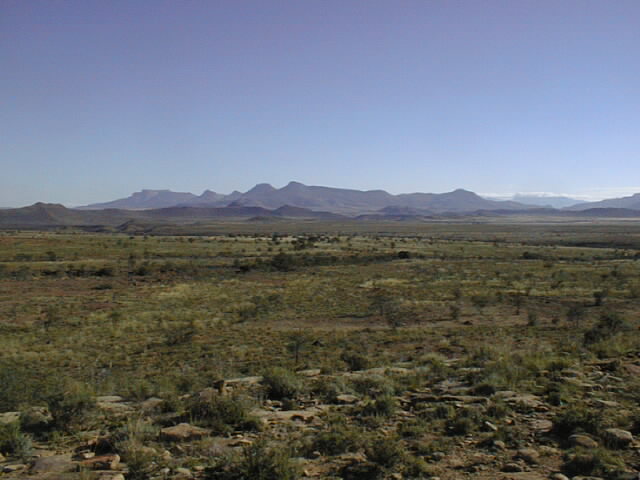
After the recent summer rains, the vegetation of the region had been transformed dramatically. Drought-stricken farms now were well grassed and dams were ubiquitous and full. It made our task all the harder as the vegetation often obscured a view of the ground and thick tangles of thornbush impeded movement. On the other hand, it was evident everywhere that water had recently washed down the hillsides, cascading through gullies and riverbeds, creating new exposures.
Johann had a full timetable and he stuck to it. He started very early in the morning, and we often returned to Tarkastad by the light of the 4x4 vehicle’ s lights. There was no mercy if the weather turned sour – and it did, for we experienced heavy rain, hail and icy winds. At the start of the trip there were four helpers: Hugo van der Spuy, Rowena Dahlmann, Lex Schwartzel and Cynthia Kemp: as these SASAP members were obliged to leave, others replaced them - Steve and Antoinette Swart, and Tinus and Gert de Beer came later.
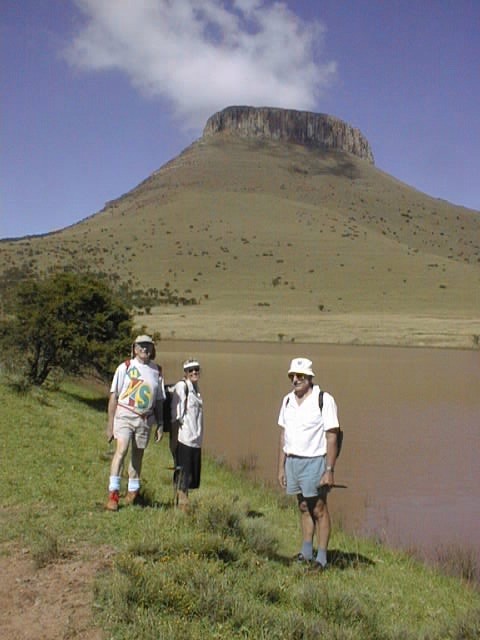
We were warned beforehand by Johann that the pickings would be meagre, as for some unknown reason the fauna and flora of the Karoo experienced a lean period during the Early Triassic when these rocks were deposited. Our brief was to find anything of palaeontological interest, but especially Procolophon, a small reptile-like creature, rather like a leguaan, no more than about 35cm in total length. Some days were more productive than others, but at each site we managed to find plant and animal material. It took only a short time to realize that the plant fossils were located usually in blue-green-grey-coloured matrix, while the animal remains tended to be in the reddish matrix. Intriguingly, one fossil was found in sandstone.
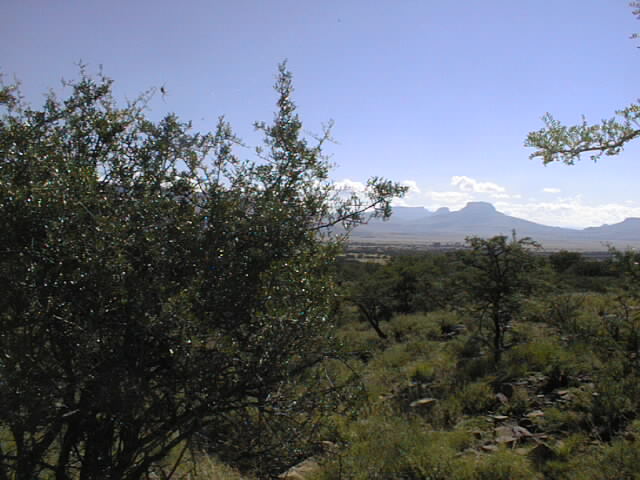
It was a great thrill to locate a skull of Procolophon embedded in a round, cannonball-like rock, but just as rewarding when one’s eye caught the familiar fibrous strands of plant material exposed on the surface of a flat sheet of stone. At the end of the day, Johann seemed reasonably pleased with his haul of fossils, some of which have yet to be identified.
Each fossil find was laboriously and meticulously documented by Johann, and a GPS reading taken to record exactly the site of origin. For most of the day, we saw little of Johann as he was higher above us, measuring exposed strata. So, if we found anything of consequence, we would build beacons to mark our finds. In a rugged terrain often well-grassed, there was sometimes a feverish search to relocate these beacons at the end of the day when Johann finally made his way back down the slope and wanted to examine our finds.
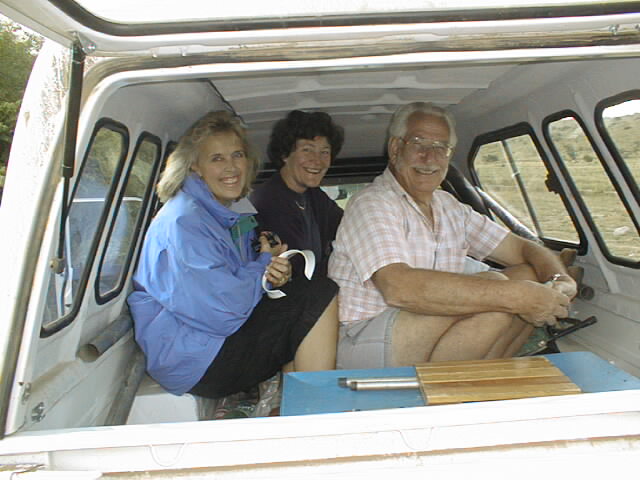
Fossils and geology preoccupied us, but there was plenty of time to appreciate our surroundings. Some mountain slopes were densely covered with lovely purple iris-type flowers, the ‘giftulp’ or ‘bloutulp’, Moraea polybrachia. A large species of spider was adept at stretching web-strands between shrubs. ‘Like ruddy Eskom powerlines,’ muttered Lex as he disentangled himself from a net of silky fibres on more than one occasion.

Our wildlife-sighting list seemed endless: baboon, bushbuck, duiker, monkey, chameleon, tortoise, springbok, ostrich, jackal, hare, mountain reedbuck, porcupine (quills only), antbear (holes aplenty), steenbok, dassie, owl, black eagle . . . even lechwe. The landscape changed by the hour, depending on the mood of wind and cloud. It was not difficult to see why artist Thomas Baines had in the mid 1800s been so captivated by the subtle light and empty expanses of the region. And little appears to have changed since then, for sparse and erratic rainfall has limited farming and industrial development, keeping human and animal populations low.
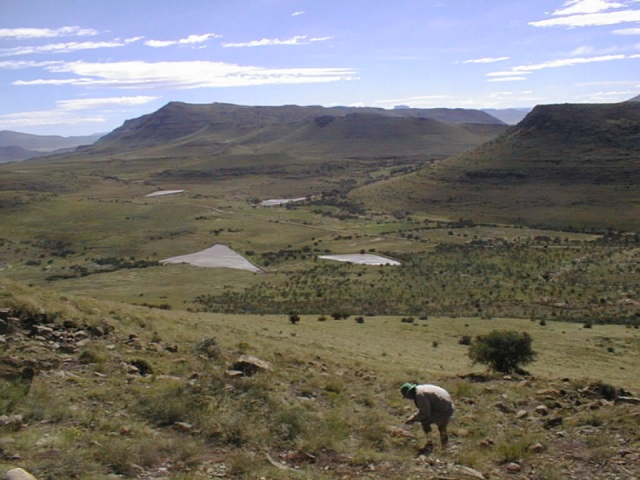
Conscious of the current environment and climate, it was all the more fascinating to delve a little deeper in time and compare it with Johann’s research. After all, we were examining Gondwanaland, not the Eastern Cape. We were handling plant and animal remains that had lived at a time when the environment looked very different and the southern continents and India were amalgamated to form the supercontinent Gondwana. A humbling thought.